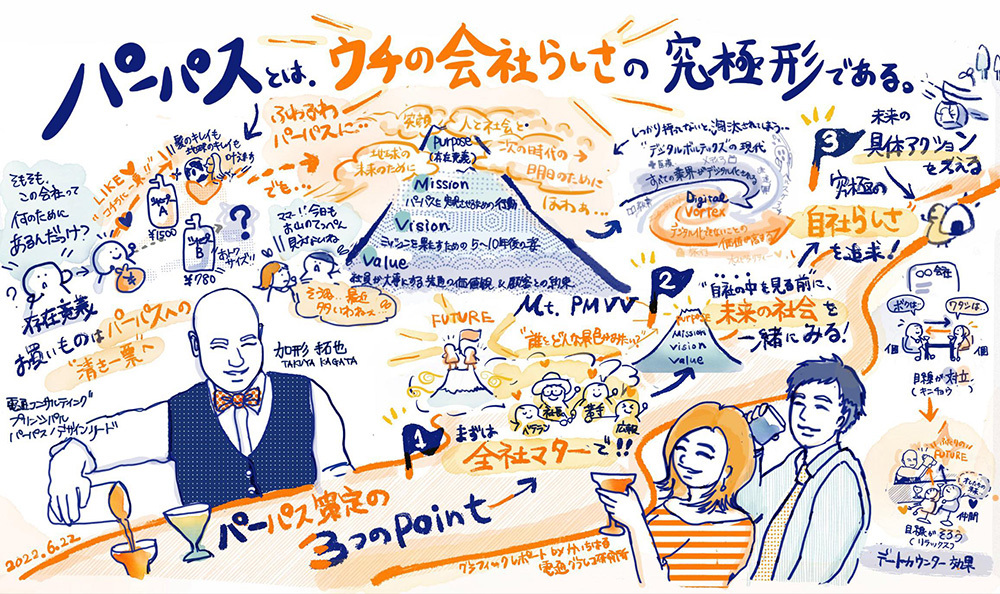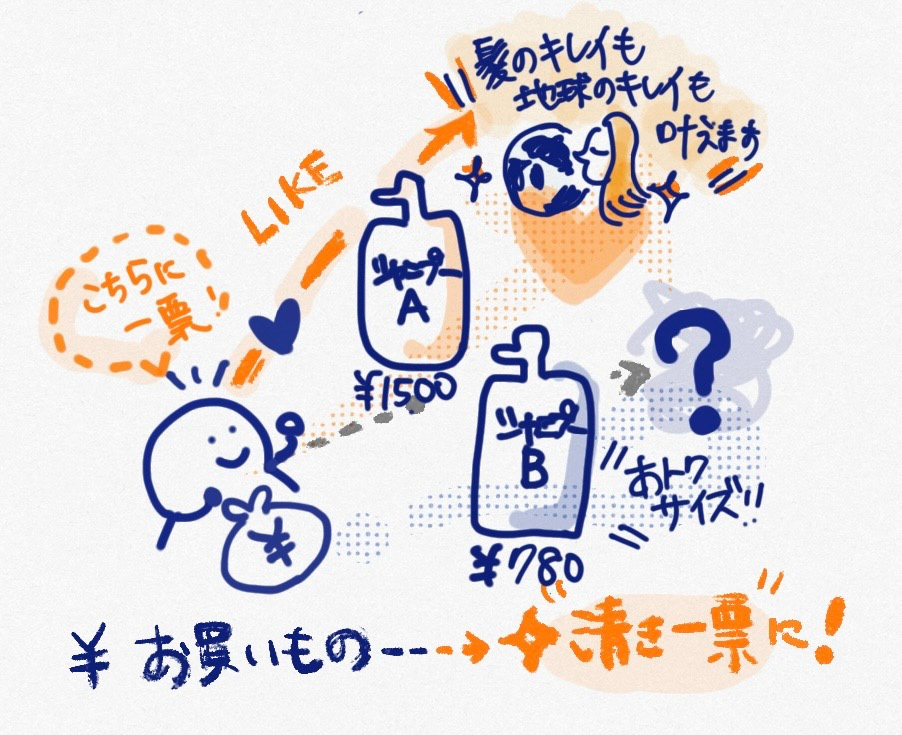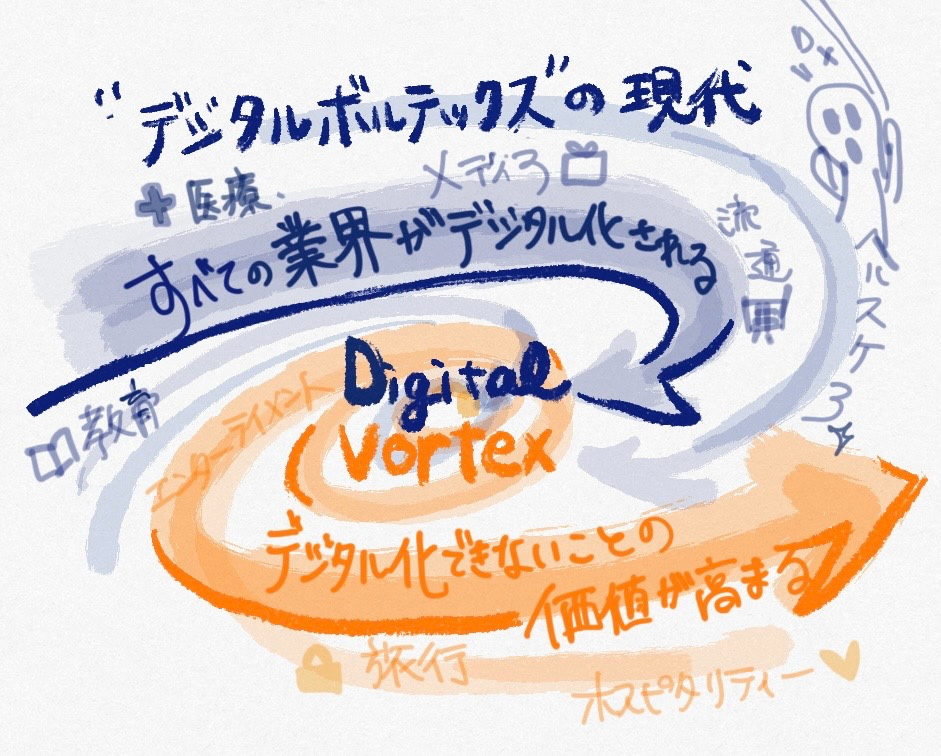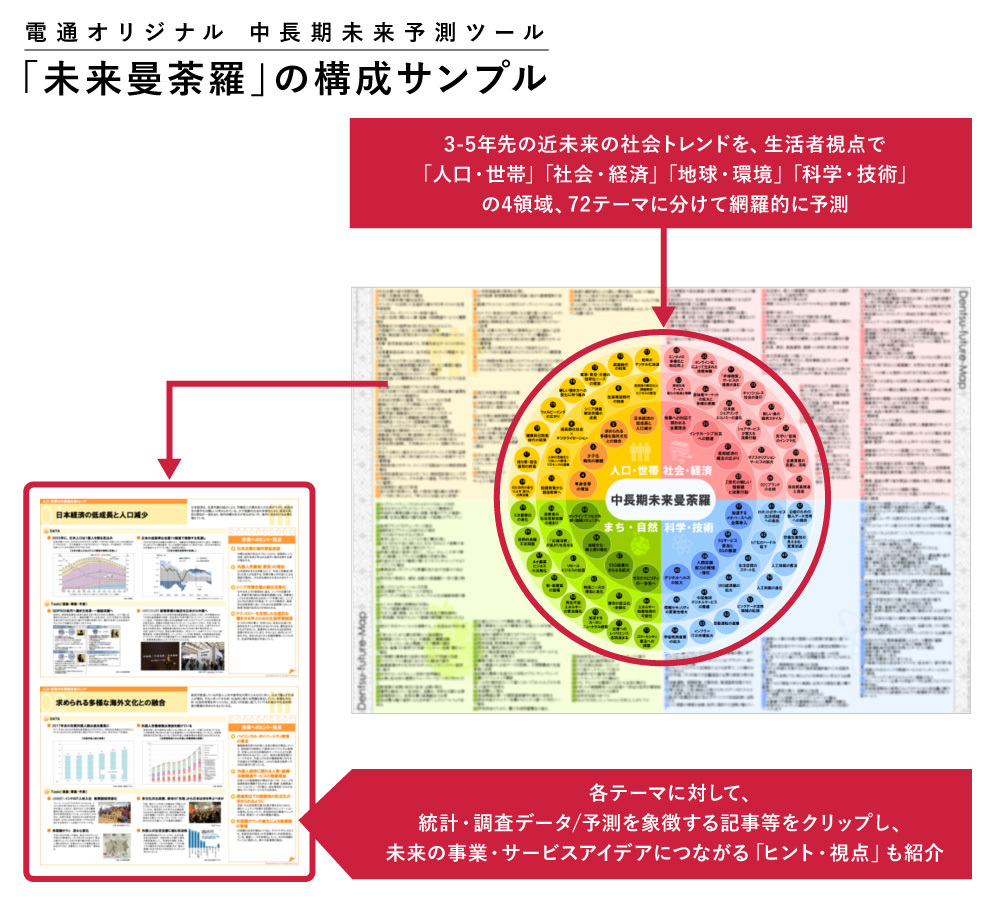Note: This website was automatically translated, so some terms or nuances may not be completely accurate.
"Purpose" is the ultimate expression of "what makes our company unique."

It's often said that to understand a company, one should look at its "purpose"—the statement defining its reason for existence. However, many have likely encountered purpose statements that seem to say something without actually saying anything, filled with noncommittal, safe content.
Companies that successfully define their purpose gain consumer trust—people feel reassured that the products and the company's values are aligned—and see improved employee engagement.
In recent years, purpose-setting has gained attention in Japan too. To ensure purpose doesn't become just a "trend," this article introduces three key points to watch out for, presented by Takuya Kagata of Dentsu Consulting Inc.
<Table of Contents>
▼The "PMVV" Everyone Can Say Is Trending
▼Don't Leave Purpose Formulation to PR Alone
▼Purpose Formulation Point 1: Start as a "Company-Wide Project"
▼Purpose Formulation Point 2: Look at the Future Society Before Looking Within Your Company
▼Purpose Formulation Point 3: Pursue Your Ultimate Company Identity by Considering Concrete Future Actions
▼Make "Purpose + Business Ideas" a Combined Company Asset
"PMVV" That Anyone Can Say Is Trending
"PMVV" adds "Purpose" to the traditional Mission, Vision, and Values. Recently, a growing number of companies are announcing, "We've established a new PMVV."
According to a survey by SMO Inc., a consulting firm specializing in purpose-driven strategies, 91 companies listed on the Prime Market officially state their "Purpose" (or "Purpose" in English) as of May 2022.
The heightened focus on purpose stems from the fact that technological catch-up among competitors in the same industry has become so rapid that similar services have proliferated. Simultaneously, as customers have matured, the act of buying goods has evolved beyond mere "purchasing." It now strongly incorporates the element of casting a "clean vote," viewing their money as a form of "voting."

When such customers look at a company, they ask themselves, "What is this company here for in the first place?" In other words, customers are now turning their attention to the company's "purpose" – its deeper, more fundamental reason for existence, which is derived from a thorough exploration of its mission and values.
Incidentally, companies themselves don't actually exist; what truly exists are the "people" working there. Consequently, employees are also increasingly contemplating their own purpose: "What is the meaning of our existence?"
The problem is that for many companies, the substance of this purpose is remarkably vague.
We have entered the era of the "Digital Vortex." Vortex literally means "whirlpool." Driven by advances in digital technology, companies are being swept into the whirlpool of digitalization and facing elimination. Companies can no longer rest on their past "winning formulas" within their industries. They are now required to constantly question "What exactly is our industry/business model?" and continuously adapt.

What follows is a situation where, as companies transform their business models to survive, it becomes difficult to visualize exactly which customer needs they aim to fulfill.
For example, suppose a company originally had a unique characteristic (actually a strength). However, in the tide of the times, such as digital evolution, if it tries to break away from that characteristic (strength) while simultaneously creating a purpose, it might inadvertently end up proclaiming cautionary words like "customer-oriented," "next-generation," or "new" – phrases that ultimately mean "who knows what they're talking about."

Even with a well-intentioned purpose, it ends up sounding like " " – saying something yet saying nothing. Please take a moment to review your company's purpose and ensure it doesn't fall into this trap.
It's crucial not to leave PMVV formulation solely to PR
In practice, PR departments often get tasked with "purpose formulation." Why? Because PR usually handles internal and external communication after the purpose is set. This inevitably leads to situations where management says, "Here's our mid-term business plan. Based on that, come up with a purpose using nice-sounding words."
The recent trend toward corporate holding companies further exacerbates this "PR-centric problem." It's no easy task for a holding company's PR team to coordinate executives across multiple operating subsidiaries.
When PR is in this position, the crafted purpose statement gets hammered and polished according to top-down directives, gradually becoming like a "smooth stone." The relentless pursuit of an output that won't face internal criticism leads to increasingly abstract content being stripped away.
The resulting purpose statement becomes inwardly ambiguous—"we don't know what to do specifically"—and outwardly generic—"something any company could say."
This frustration was deeply felt by every PR person I knew at partner companies. I heard the anguished cry, "Then how the hell are we supposed to proceed?!" , time and again. So, to prevent your purpose statement from becoming a "smooth stone," here are three key countermeasures.
Point 1 for Purpose Development: First, Make It a "Company-Wide Project"
The first key point in purpose development is to "make it a company-wide matter at all costs." Next, "avoid narrowing the project scope and pay attention to team composition." Methodologically, this involves two points:
1) Redefining PMVV is a means. Position it as a "company-wide matter" to shape the company's future
Redefining PMVV is the first step for a company to create new history. It requires serious substance, encompassing new businesses, the company's direction, and its stance toward society.
Putting this redefinition into words is simply impossible for the PR department alone. Especially for holding companies, where members are spread across different operating companies and possess distinct expertise, it's crucial to broaden the project scope. This means having them think about the company's future, not just the wording, thereby making it a company-wide matter.
For this reason, when PR professionals we work with ask us to "help craft their purpose statement," we generally decline to take on the task as is.
In the case of a certain manufacturer, we involved the president in the decision-making process. We proceeded by developing concrete content, aiming not just to "land the words" but to simultaneously output new business ideas as part of a larger project. This approach has yielded results, leading to the birth of several new businesses.
2) Don't be afraid to involve diverse members
Next, assembling the right team for PMVV redefinition is crucial. The key is to include seasoned veterans who are central to each business unit—people you might think, "We need to get that person on board first" or "If they buy in, things will move quickly"—without hesitation.
While including younger members is beneficial, an all-younger team is inadvisable. The purpose of PMVV redefinition isn't merely "creating a safe PMVV and landing it," but "integrating the PMVV formulation process with the process of envisioning a new future." More fundamentally, the ultimate goal is "to truly realize a new future." By involving experienced professionals who deeply understand the company's challenges, you can harvest the fruits beyond.
Point 2 for Purpose Formulation: Look at the Future Society Before Looking Inside Your Own Company
Next is the project approach.
Since "purpose" equals "our company's reason for existence," the formulation process often starts with analyzing the company's history and assets. While these are certainly necessary elements, I believe the "order in which we begin the conversation" is critically important.
When people from various positions within the company gather to discuss their own company, the conversation inevitably gets stuck within the company's framework and constraints. Since people with departmental turf gather, the discussion stays confined to their own turf, leading each to propose solutions optimized only for their part. The conversation fails to become future-oriented.
Therefore, it's crucial to create a mechanism where all members can look in the same direction. It's often said that "for a first date, a counter seat is better than a table seat." When relationships are still developing, rather than facing each other, talking about what's happening across the counter tends to make conversation flow better and deepen mutual understanding.

The view we want PMVV planning members to see is the "future." We set the "future" as what lies beyond the counter. This is where Dentsu Inc. utilizes the "Dentsu Future Mandala."

The Dentsu Inc. Future Mandala is updated annually, comprehensively covering how society will change in the near future across 72 themes.
At the start of a project, we first have project members view the mandala from their respective perspectives. This prompts them to think, "If this were my company, what kind of significance could we hold in this changing society?" and consider the future in relation to their own organization.
"If society changes like this, couldn't one of our company's assets be used in this way?"
I've witnessed countless times how starting discussions with a future-oriented mindset brings hidden, valuable assets within the company to light. It's the moment the project really takes off. At one food company, the following conversation actually unfolded:
Person A: "The world is shifting from mass production to truly personalized solutions, right?"
Person B: "If Amazon's recommendations are personalized, wouldn't it make sense for what we eat to be personalized too?"
Veteran Person C: "Our frozen foods might seem mass-produced, but we cater to allergies for senior care facilities. Come to think of it, we have a production line for small-batch, diverse items, right?"
Fundamentally, defining purpose, mission, vision, and values requires concrete details like the above to even begin discussion. To conclude "What future is our company ultimately heading toward?", we need to build it together with specific ideas.
Incidentally, when we provide support, we coordinate so that executives can participate in these "raw discussions." Even extremely busy presidents and vice presidents are scheduled to join at specific workshop times, ensuring they contribute at critical points.
Point 3 in Purpose Formulation: Pursuing the Ultimate Expression of Your Company's Identity by Considering Concrete Future Actions
Finally, we emphasize the importance of considering concrete future actions alongside PMVV.
The key is to identify opportunity areas from future societal changes, align them with the assets the company has built, and collaboratively determine "what specific actions should be taken."
The company's raison d'être for the future is its purpose. However, defining this solely through abstract discussions leads to the "vague" purpose mentioned at the beginning. Only by taking two or three steps further and considering "What specific actions will we take?" does the company's true identity emerge.
How deeply ideas are refined varies by company and project. Sometimes, alongside redefining PMVV, significant time and effort are invested in developing business ideas that could become future core ventures. In some cases, this process not only redefines PMVV but also yields multiple actual businesses launched from ideas conceived within the project.
Time constraints or the project's positioning might call for a lighter approach, perhaps just exploring "for example, something like this." Regardless, the crucial element is establishing clear steps within the project to develop concrete proposals.
From the ideas generated, we distill what truly represents the path we should pursue. Can the idea leverage our company's existing assets? Does it align with our core values? Does it show potential for profitability as a business? During this filtering process, discussions emerge like "What can only our company do?" or "What can't our competitors do?" Only after such open-minded discussions do we reach the ultimate judgment: "Which option feels more like our company?"
For example, one manufacturer engaged in discussions during this process about "What exactly will we do in the smart city business we're about to pursue?" As a company possessing a very broad range of technologies, they initially struggled to prioritize how to define "smart city" and where to apply their technologies.
As the discussion deepened, it became clear that this company was founded in a regional area and had many factories and sales offices located there. Consequently, most executives and employees had lived in regional areas for a long time and felt a strong sense of crisis about the decline of these regions due to declining birthrates, aging populations, and excessive concentration in cities.
As we further explored what the company could do about regional decline, hidden assets came to light – technologies contributing to smart agriculture and automation that had never been considered before. We identified competitive advantages, and what only this company could do became increasingly clear.
Many employees of this company have a place they can call their " " in the countryside. The purpose they defined incorporates a commitment to utilize their own technology and digital advancements to protect the vitality and rich natural environment of these regions.
"Turn 'Purpose + Business Ideas' into a company asset as a set"
Through this process, distilled like a single clear drop of distilled liquor, the words we arrived at form our new PMVV. Furthermore, the new action plans and business ideas that emerged during the PMVV formulation process remain. The courageous discussions held by a diverse group of members, without narrowing the scope, mean that not only the PMVV words, but also the sharpened ideas, become the company's assets as a set.
Having worked alongside many companies to formulate their PMVV, what consistently emerges throughout these projects is a deep respect for organizations that have woven their history through repeated innovation.
Hearing firsthand how many individuals, both past and present, have courageously accumulated ingenuity to contribute to society, and weaving together their words and ideas, creates an exceptionally valuable process.
At the same time, many companies struggle with the challenges of rapid societal change and the inherent drawbacks of organizational silos. Earlier, I mentioned the date counter effect. Please think of us as the bartenders behind that counter. Instead of serving fine drinks, we strive to be partners who can help you envision a better future. Our diverse team members train diligently every day to achieve this.
By the way, here is Dentsu Consulting Inc.'s purpose!
https://www.dentsuconsulting.com/company/
Special thanks: Yuki Yokoyama (Article Structure)
Was this article helpful?
Newsletter registration is here
We select and publish important news every day
For inquiries about this article
Back Numbers
Author

Takuya Kagata
Dentsu Inc.
Global Business Center
Chief Business Design Director
Dentsu Marketing Division ~ Dentsu Digital Inc. ~ Dentsu Consulting Inc. supports corporate business design, including an insurance company's 2050 vision, an automaker's smart city concept, and a food company's new ventures. Specializes in consulting grounded in urban engineering and facilitation that breaks down silos. Captain of the Dentsu Sumo Club. Right-handed. Signature move: left-handed throw.
Articles by this person

Deepening discussions about the future through 'Dentsu Inc. Future Mandala 2025.' What kind of future will be woven by the diversifying concepts of 'connection' and 'abundance'?



